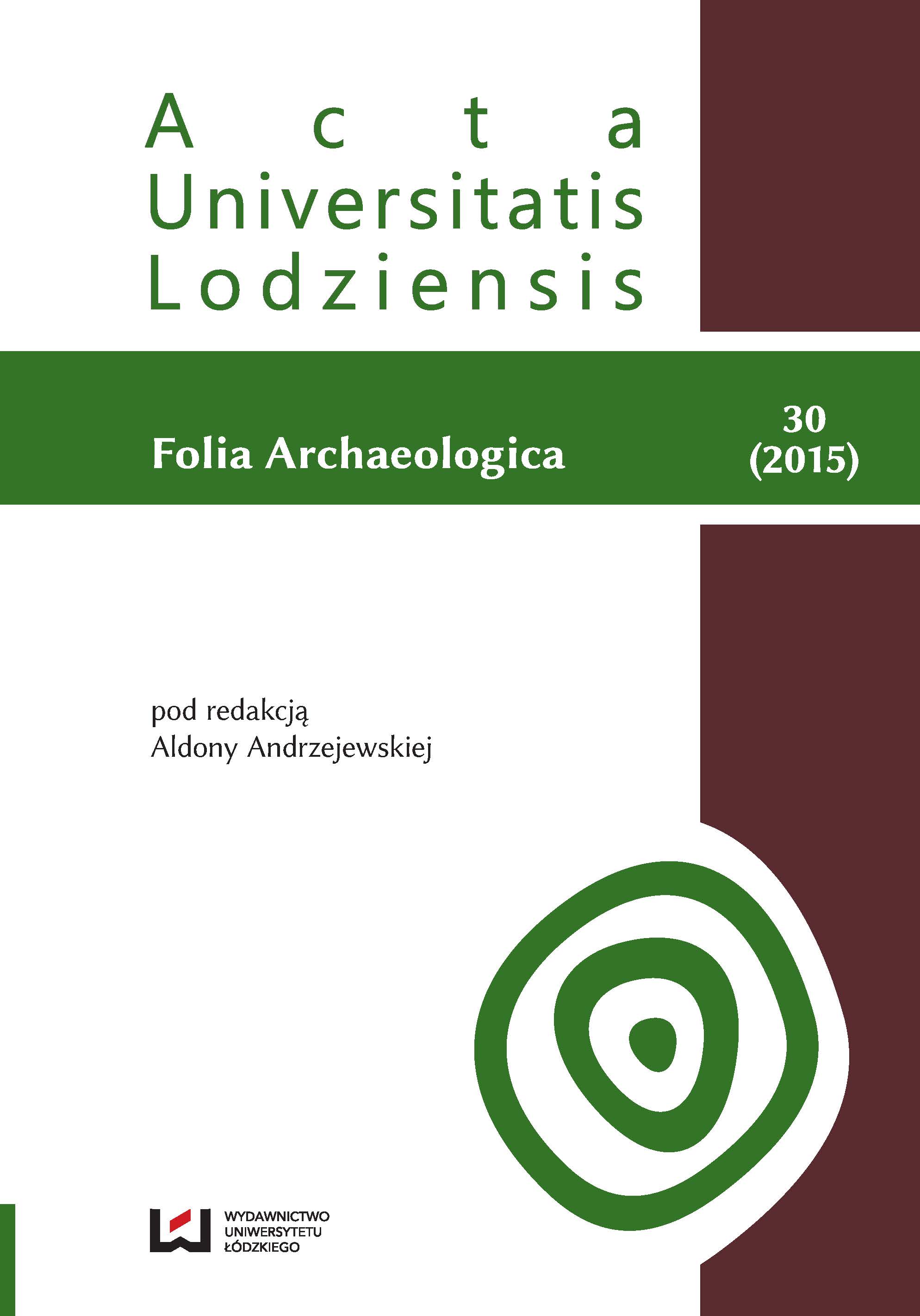Groty broni drzewcowej o cechach skandynawskich w kulturze luboszyckiej
Shafted weapons’ heads with Scandinavian features from the Luboszyce culture
Author(s): Agata Andrzejewska, Karol DemkowiczSubject(s): Archaeology, Military history, 6th to 12th Centuries
Published by: Wydawnictwo Uniwersytetu Łódzkiego
Keywords: shafted weapons’ heads; weapons; Luboszyce culture
Summary/Abstract: The armament from the Luboszyce culture is a true mix of influences coming either from the West, East or even the North. The contacts with the last of these have already been mentioned in the publications dealing with the cultural processes in the basins of middle Oder and Elbe rivers, however, in none of them was the true intensity of this phenomenon emphasized with proper strength. The purpose of this article is to change this situation by focusing on the category of shafted weapons’ heads. Scandinavianlike artifacts of this type from the territory of the Luboszyce culture are dated mostly within the C1b and C2 periods. However, some single loose (and thereby devoid of reliable context) finds that represent the head types of lesser chronological sensitivity might even be positioned as early as the phase C1a, while others as late as phase C3. The overall number of northern type spearheads is 19 from the total of 102 finds of this weapon category from the culture in question, which brings a strong 18% ratio. As far as javelin heads are concerned (3 are known from the discussed territory), all of them show Scandinavian influence. This means that the population of the Luboszyce culture maintained really intense contacts with the North in the very time of the unrests that led to the creation of the Danish bog deposits. In the discussed group of artifacts one peculiar feature can be observed. Many of the Scandinavian - like spearheads have a conic (or pyramid) – shaped area of transition between the socket and the leaf. Similar elements can be observed in late roman period spearheads both from the Northern circle and Przeworsk culture, but in either case they are rather infrequent. Within the Luboszyce culture spearheads with the mentioned feature constitute a 10% of the whole weapon category, while among Scandinavianinfluenced artifacts they fetch a 37%. This means that conic/pyramid - shaped socket/leaf transition is far more widespread among northern type spearheads from the Luboszyce culture than they are in genuine Scandinavian contexts. All these peculiarities deserve further, intensive and in-depth studies. Let’s hope further excavations and new finds as well as new research (including laboratory methods such as metallographic examination) of the existing artifacts will enable us to understand their significance better.
Journal: Acta Universitatis Lodziensis. Folia Archaeologica
- Issue Year: 2015
- Issue No: 30
- Page Range: 109-135
- Page Count: 27
- Language: Polish

